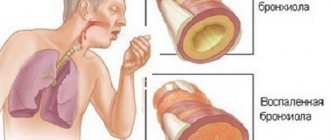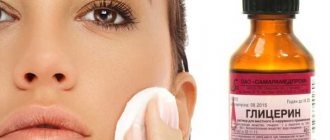Today, general anesthesia is widely used in surgery, gynecology and other areas of medicine. Before the operation, the patient is immersed in an artificial deep sleep, during which the skeletal muscles relax, some reflexes are turned off, and a state of inhibition of the nervous system is observed. General anesthesia is characterized by complete loss of consciousness and amnesia. Although epidural anesthesia has now become common practice in many public hospitals, general anesthesia is still used in sparsely populated cities and regions. The reasons are clear, and first of all, it is the lack of professional personnel and the lack of modern medical equipment.
Advice: general anesthesia is rarely performed in dentistry and is mainly due to the wishes of the patient. It is better to use infiltration anesthesia in dentistry. Several injections of an anesthetic are made into the gum next to the diseased tooth and the patient ceases to feel anything in this area.
The professionalism of medical personnel is the key to the success of the operation
During the operation, the presence of an anesthesiologist is simply necessary
General anesthesia is one of the most difficult types of anesthesia and, if we are discussing which anesthesia is better to choose, preference should clearly not be given to it, especially for pregnant women. Complications of general anesthesia, manifested in loss of control over anesthesia by medical personnel, can pose a threat to the health and life of the person on the operating table.
There are three main components of general anesthesia:
- Medication sleep. During which the patient is forced to “calm down”;
- Analgesia. The person does not feel pain. The body’s automatic (vegetative) reactions to surgical trauma are suppressed. Such reactions may be, for example, tachycardia (increased heart rate), increased blood pressure;
- Muscle relaxation. It involves muscle relaxation, resulting in the provision of normal conditions for surgical interventions.
As you can see, the primary task set before the anesthesiologist is to eliminate pain. If it doesn’t exist, it means that physiological protective mechanisms will not turn on.
Local anesthesia
Treatment under anesthesia is the only option for providing surgical care to a patient or performing complex manipulations. Often, a doctor will numb a specific area, which is achieved by injecting it with an anesthetic solution and is called local anesthesia. This type of anesthesia is used for opening ulcers, treating teeth, and excising a hernia. Local anesthesia is the injection of an anesthetic into the skin and other anatomical structures of the place where surgery is expected to be performed.
The anesthetic injections are superficial; only in exceptional cases can the doctor administer the drug more deeply. Local anesthesia is performed by injecting the drug through a very thin needle, so the actual anesthesia procedure is minimally painful. Often, the administration of an anesthetic is combined with sedation - sedatives are introduced into the patient’s body, which normalize the person’s psychological state, reducing feelings of anxiety and restlessness.
Despite the fact that local anesthesia is used very widely in medicine, the consequences of anesthesia can be quite serious. For example, local anesthetics can have a negative effect on the heart and brain, leading to heart rhythm disturbances, seizures and loss of consciousness. At the same time, doctors claim that local anesthesia, compared to general anesthesia, is safer for the patient’s health.
Main types of general anesthesia
Endotracheal anesthesia
- Intravenous;
- Inhalation:
- Endobronchial;
- Mask;
- Endotracheal.
- Combined.
What type of anesthesia will be better? The doctor decides based on the specifics of the operation and the individual physiological characteristics of the patient’s body.
Advice: the best option for short-term operations is intravenous anesthesia, so it is better to do it, for example, during gynecological curettage.
Non-inhalation (intravenous) anesthesia
Intravenous general anesthesia has a number of advantages over inhalation methods. With this type of general anesthesia, the patient switches off faster and there is no stage of excitement. However, when this method is used alone, the anesthetic effect is very short-lived, so intravenous anesthesia is most often done by inhalation. The patient is intubated only after the non-inhalation method has begun to take effect. The drugs of choice for intravenous anesthesia are drugs from the group of barbiturates - hexenal and sodium thiopental.
Despite the many types of anesthesia, the patient cannot choose one or another technique; this issue is resolved together with the anesthesiologist. In this case, the doctor takes into account all contraindications and individual characteristics of the body.
(Ratings: 1 , average: 5.00 )
Stages of general anesthesia
There are four of them: analgesia, motor stimulation, surgical anesthesia and agonal stage. Analgesia, as mentioned earlier, is accompanied by the shutdown of pain sensitivity centers. The patient is in a state of “stunning”, while breathing is deep, the pulse quickens, but reflexes are still preserved.
The stage of motor excitation is characterized by the following phenomena:
- Increased skeletal muscle tone;
- Uncoordinated movements in space;
- Erratic contractions of the arms and legs;
- Trying to get up from the operating table;
- Pupil dilation;
- Frequent swallowing;
- Voluntary urination;
- Reflex cessation of breathing;
- Vomiting.
The stage of surgical anesthesia is divided into four levels. These are superficial, light, complete and ultra-deep anesthesia. With light anesthesia it is already possible to perform superficial operations.
Control of general anesthesia
Modern equipment will allow you not to miss even the slightest changes in the patient’s condition
Monitoring the patient's condition under anesthesia is mandatory, since one of the consequences of general anesthesia can be death. Doctors monitor the following vital signs of the human body: body surface temperature; color of mucous membranes; oxygen content in the blood; pulse; pupil reaction; blood pressure; continuous recording of ECG and so on.
Inhalation anesthesia can be controlled by anesthesia machines and anesthesia monitors.
Means for non-inhalation anesthesia
Drugs in this category are used for general anesthesia, which can be intramuscular, intravenous, rectal, or subcutaneous.
Anesthesiologists can administer narcotic drugs intraosseously, intracavitarily or intranasally, thereby bypassing the patient's respiratory tract. In modern anesthesiology, intravenous anesthesia is most often used, since it has the highest controllability.
If we are talking about pediatric surgery, then specialists can use the rectal, oral or intramuscular route of administering the drug. In the first two cases, only the level of basic anesthesia can be achieved.
Intravenous
This is one of the most effective ways of administering a drug when you need to quickly achieve the required concentration of the drug in the blood plasma.
With intravenous anesthesia, the anesthetic is injected directly into the bloodstream.
This type of anesthesia has several important advantages:
- A minimum number of medical instruments is used.
- Respiratory tract irritation is excluded.
- Electrocoagulation can be used.
Among the disadvantages are irritation of the vascular wall with the subsequent development of phlebitis, as well as the fact that anesthesia is difficult to manage.
Intravenous anesthesia is indicated for short surgical interventions and other manipulations.
| Drug name | Description |
| Hexenal | The drug is used in combination with other anesthetics and muscle relaxants to put the patient under anesthesia for minor surgical interventions or painful instrumental examinations. The medication should not be taken for diabetes, hypotension, inflammatory diseases of the nasopharynx, sepsis and bronchial asthma. Hexenal is administered intravenously at a concentration of 1-2% (maximum 1 ml/min.). A single dosage should not exceed 1 g of the drug. |
| Propanidid | The drug is used as an anesthesia for short dental and outpatient surgical procedures, as well as for pain relief during childbirth. Propanidide is contraindicated in the following cases: hemolytic jaundice, heart failure, hypertension, acute alcohol intoxication, children (up to 4 years). The dosage of the drug is determined by the anesthesiologist depending on the patient’s condition. |
| Viadryl | This medication is used for introductory and basic anesthesia in combination with nitrous oxide. The drug should not be used for phlebitis, thrombophlebitis, severe arterial hypotension, or respiratory failure. Viadryl is not used in combination with barbiturates. The dosage of the drug varies depending on the expected duration of the upcoming surgical intervention and the actual condition of the patient. |
Before choosing a safe drug for intravenous non-inhalation anesthesia, the anesthesiologist studies the patient’s medical record and also clarifies the presence of allergies to drugs in order to reduce the risk of adverse reactions.
Intramuscular
This type of anesthesia is characterized by its simplicity, ease and accessibility. Anesthesiologists practice intramuscular administration of Ketamine, barbiturates, and premedication drugs. Provided that general anesthetics are used, the surgical stage of anesthesia develops rather slowly (this process takes from 17 to 35 minutes).
Intramuscular non-inhalation anesthesia involves the introduction of a drug into the area of the upper outer quadrant of the gluteal region, the upper third of the outer surface of the shoulder or thigh. The needle should be inserted to a depth of 6-7 cm.
Possible complications include the formation of post-injection abscesses and damage to the neurovascular bundle. The drug Ketamine (Calipsol, Ketalar) is in greatest demand.
Rectal
In modern medicine, this option of general anesthesia is used extremely rarely. This is due to the complexity of dosing the drug, the impossibility of taking into account the rate of absorption of the drug components by the mucous membrane of the rectum and stomach. Before administering the drug, a cleansing enema must be performed.
A special rubber catheter is inserted into the anus to a depth of 14-20 cm and connected to a Janet syringe, which contains a maximum of 200 ml of solution. In isolated cases, the procedure can lead to intestinal bleeding, damage and rupture of the colon. For anesthesia, Chloral hydrate (Chloraton, Chloradorm), Narcolan is used.
The most common consequences of general anesthesia
Recovery from anesthesia is an equally important stage, characterized by the restoration of reflexes and a return to normal functioning of the body. Anesthesiologists continue to monitor the patient after the operation, as various types of consequences of anesthesia may occur.
There are the following consequences associated with dysfunction of the cardiovascular system:
- Reduced pressure;
- Pulmonary edema;
- Increased pressure;
- Pulmonary embolism;
- Disturbance of normal heart rhythm.
There are consequences associated with breathing problems:
After anesthesia, headache and drowsiness may occur, which usually pass quickly.
- Spasm of the larynx and closure of the vocal cords;
- Carbon dioxide accumulation;
- Increased sputum production;
- Bronchial spasm.
Other consequences of general anesthesia:
- Allergic reactions;
- Hiccups;
- Acute adrenal insufficiency.
The most common effects, especially in children and pregnant women, are vomiting and nausea. A serious consequence of anesthesia for patients with epilepsy can be the development of convulsive syndrome.
Tip: For patients with epilepsy, the best type of anesthesia is spinal, which uses only four milliliters of local anesthetic. Such small doses of an anesthetic substance can cause an anticonvulsant effect.
Light anesthesia - peace of mind of the doctor
INTRODUCTION
General anesthesia (general anesthesia) is one of the most complex types of anesthesia. The main difference between general anesthesia and other types of anesthesia is the switching off of the animal’s consciousness. General anesthesia provides:
- ANALGESIA – insensitivity to pain;
- AMNESIA - lack of memory about the operation itself;
- RELAXATION – relaxation of the patient’s muscles.
NARCOSIS is, in fact, a very deep sleep induced artificially with the help of special medications (narcotics - anesthetics). Typically, general anesthesia is initiated and maintained with intravenous drugs administered to the animal through a venous catheter. The depth of general anesthesia is modified by changing the administered dose of anesthetic depending on the stage of the operation, as well as depending on the general condition of the animal. At the end of the operation, the supply of anesthetic to the animal is completely stopped, the concentration of anesthetic in the brain decreases, after which the process of returning consciousness occurs until complete recovery.
GENERAL CHARACTERISTICS
One of the anesthetics used since the 80s of the twentieth century in humane medicine and veterinary medicine is PROPOPHOL, a short-acting intravenous anesthetic. It belongs to the inert derivatives of phenol and is 2.6-diisopropylphenol. It is insoluble in water, but at the same time it dissolves quite quickly in fats. Available in the form of a 1%, sterile, pyrogen-free, white water-oil emulsion. The drug provides a quick induction of anesthesia (60-90 seconds), which is not accompanied by a stage of excitation. The duration of anesthesia after a single injection averages 5-10 minutes. At lower doses, the drug causes sedation and reduces pain perception. The short duration of clinical action of propofol is due to its redistribution in tissues and rapid metabolic clearance. Although the half-life is 40-50 minutes, awakening occurs quickly even after a prolonged infusion of propofol. The reason for this contradiction lies in the large volume of distribution of propofol in an equilibrium state: it is intensively redistributed into muscles, fat and other vascularized tissues.
A technique called total intravenous anesthesia (TIVA) became widespread with the use of propofol. Currently, this method is a real alternative to inhalation (gas) anesthesia.
Another important aspect of the use of propofol is its antiemetic effect. NR Fahmu (1996, USA) reports that when propofol was used, there was no syndrome of postoperative nausea and vomiting, which is very important if the animal was fed before the operation.
CHARACTERISTICS OF THE PREPARATION RELAX
All this time, starting from the 80s of the last century, veterinarians in Ukraine used only humane medicine during propofol anesthesia. Due to the needs of the veterinary market, she created an anesthetic under the trade name RELAX.
“Relax” is the only propofol-based drug for NARCOSIS in dogs and cats, registered for veterinary use in UKRAINE.
RELAX is a sterile, pyrogen-free 1% solution of propofol for intravenous administration. RELAX is used in dogs and cats for general short-term anesthesia (especially when a short period of recovery of the animal from anesthesia is necessary), for induction of anesthesia and maintenance of basic anesthesia. RELAX is administered to animals in the following cases: for short-term anesthesia during short-term (up to 5 minutes) surgical and diagnostic procedures - once, for induction of anesthesia and maintenance of basic anesthesia through additional injections in fractional doses. To achieve short-term anesthesia, the drug RELAX is administered intravenously in a dose calculated for the animal’s body weight, once for 10-60 seconds until the anesthetic effect occurs.
In practice, to achieve adequate anesthesia, the dose should be adjusted based on the animal's response to the drug. When using premedication, the dose of RELAX is reduced (Table 1).
Table 1. DOSAGE OF RELAX
| № | Kind of animal | Type of anesthesia | Dose of the drug per 1 kg of animal body weight |
| Short-term general anesthesia | |||
| 1. | DOGS | Without premedication | 0.65 ml |
| With premedication | 0.4 ml | ||
| 2. | CATS | Without premedication | 0.8 ml |
| With premedication | 0.6 ml |
For premedication, acepromazine, xylazine and others are usually used, and lower doses are used than normalized by the instructions for the drugs (Table 2).
Table 2. DOSAGE OF PRE-MEDICATION DRUGS
| № | Premedication drug | Dose of the drug per 1 kg of animal body weight | Route of administration |
| 1. | Acepromazine | 0.06 mg | Intramuscular, subcutaneous, intravenous |
| 2. | Oxymorphone | 0.09 mg | |
| 3. | Xylazine | 0.33 mg | Intramuscular, subcutaneous |
If necessary, general anesthesia lasting up to 60 minutes is provided by administering anesthesia with the drug RELAX and further administering additional doses of the drug. Additionally, a dose of 1 ml per 1 kg of body weight can be administered.
CLINICAL RESEARCHES
Previously, before testing the RELAX drug on target animals (cats, dogs), a toxicity on mice and rabbits and the pyrogenicity of the drug on rabbits in the vivarium of BIOTESTLAB LLC. Conclusion: the drug is harmless and pyrogen-free.
The study of the drug Relax on target animals was carried out under the following conditions:
— clinics of veterinary medicine of the State Scientific Research Institute of Veterinary Drugs and Feed Additives, Lviv;
— WSW clinic of Dr. Velichko , Kiev;
— SIRIUS animal shelter (Fedorovka village, Vyshgorod district, Kiev region),
— Municipal enterprise “Animal Shelter” (Borodyanka, Kiev region).
A comparative study of the clinical effectiveness of the drugs RELAX and DIPROFOL on cats and dogs was conducted at the SIRIUS animal shelter.
DIPROFOL – , Kiev – series M089774/00FARUA16000875, valid until 11.2019;
RELAX – , Kiev – series 005D, valid until 06.2019
For the study, 8 cats were taken. The breed is mestizos, the average age of the group is 1-3 years with a body weight of 3-4 kg.
A group of dogs was also created, breed - mestizos, age 1-3 years, body weight 15-20 kg. A comparative study of the effects of the drugs RELAX and DIPROFOL was carried out in the operating room of a shelter. Surgical intervention was performed on animals for the purpose of orchiectomy of cats and males (castration) and ovariohysterectomy of cats (sterilization). The animals were divided into 6 groups according to species and sex.
Table 3. RESEARCH OUTLINE
| № | Type of study | RELAX drug | The drug DIPROFOL | Dose according to active substance – PROPOPHOL | PRE-MEDICATION with SEDAZINE * |
| 1. | Cats undergoing orchiectomy | Group 1 (2 cats) | Group 2 (2 cats) | 8 mg/kg body weight | |
| 2. | Cats undergoing ovariohysterectomy | Group 3 (2 cats) | Group 4 (2 cats) | 6 mg/kg body weight | 0.33 mg/kg body weight |
| 3. | Males undergoing orchiectomy | Group 5 (2 males) | Group 6 (2 males) | 6.5 mg/kg body weight |
*PRE-MEDICATION with SEDAZINE – Dose according to active substance (xylazine)
The animals were weighed on scales and the volume of drug administration was calculated according to the instructions for the drug RELAX at the rate of 0.8 ml per 1 kg of weight for cats and 0.65 ml per 1 kg of weight for dogs. The drug DIPROFOL was administered at the rate of 0.8 ml per 1 kg of animal weight. The animals were one by one fixed on the operating table, a catheter was installed on the front paw, through which RELAX or DIPROFOL was slowly injected.
The calculated dose was adjusted based on the physiological response of the animals (activity, severity of reflexes, respiratory and pulse rates). The onset of anesthesia was noted by the following signs:
1. Decreased corneal reflex;
2. Analgesic effect (absence of pain reaction during manipulation);
3. Decreased muscle tone.
PHOTO 1. Cats under anesthesia:
1. Cat Manya (white) – the effect of the drug RELAX; 2. Cat Sonya (spotted color) – the effect of the drug DIPROFOL.
After the onset of sufficient analgesia and muscle relaxation, the animals underwent surgical intervention according to accepted techniques. All operations on animals were performed by Vladislav Sergeevich Kalitvyansky, a veterinarian at the SIRIUS shelter. During the operation, the general condition of the operated animals was monitored (activity, pain sensitivity), paying special attention to cardiac activity (heart rate) and the number of respiratory movements.
Table 4. Results of comparative studies of the drugs RELAX and DIPROFOL (selected).
| Group | Type of animal, nickname, age | Body weight, kg | Calculated dose of the drug | Type of surgery, drug used | Time of entry into anesthesia, seconds | Duration of anesthesia, min./seconds | Recovery from anesthesia (minutes), side effects | Results of clinical studies during and after surgery |
| 1. | Cat Afonya, mixed breed, 18 months. | 3,2 | 3.2 x 0.8 =2.6 ml | Orchiectomy RELAX 2.6 ml | 18 | 4:48 | 30 No side effects | General condition is satisfactory, physiological indicators are within normal limits |
| 2. | Cat Lex, mixed breed, 18 months. | 3,8 | 3.8 x 0.8 =3.0 ml | Orchiectomy DIPROFOL 3.0 ml | 18 | 5:20 | 40 No side effects | |
| 3. | Cat Manya, mixed breed, 12 months | 3,0 | 3.0 x 0.6 =1.8 ml | Ovariohysterectomy Premedication SEDAZIN 0.06 ml IM RELAX 1. Initial dose 1.8 ml . 2. After 5 min. additional dose 0.5 ml . 3 . After 3 min. additional dose 0.5 ml | 23 | 13:40 | 28 No side effects | |
| 4. | Cat Sonya, mixed breed, 16 months. | 3,3 | 3.3 x 0.6 =2.0 ml | Ovariohysterectomy Premedication SEDAZIN 0.07 ml IM DIPROFOL 1. Initial dose 2.0 ml . 2. After 5 min. additional dose 1.0 ml . | 23 | 15:23 | 36 No side effects | |
| 5. | Male, Druzhok, mixed breed, 24 months. | 15,4 | 15.4 x 0.65 =10 ml | Orchiectomy RELAX 10.0 ml | 15 | 5:26 | 18 No side effects | |
| 6. | Male, Caesar, mixed breed, 24 months. | 20,6 | 20.6 x 0.65 =13.4 ml | Orchiectomy DIPROFOL 13.4 ml | 12 | 5:10 | 15 No side effects |
After the operations, in order to prevent septic complications, all animals were administered intramuscularly the antibacterial drug SPECTRAN (amoxicillin + betamethasone) at a dose of 1 ml per 1 kg of animal weight. The surgical site was treated externally with the antiseptic drug FLOXY-SPRAY MAX (florfenicol + prednisolone). To prevent postoperative pain syndrome, cats were additionally administered the drug METAKAM at a dose of 0.04 ml per 1 kg of weight.
Photo 2. Cat Manya after surgery
After the operation, the animals were observed for 3 hours, recording the time of recovery from anesthesia, focusing on the restoration of reflexes, muscle tone and general activity of the animals. Subsequently, once a day for 3 days, the general condition of the animals was assessed: appearance, activity, condition of mucous membranes, appetite. In addition, body temperature was measured, breathing rate and pulse were measured. In all operated animals, all physiological parameters were within normal limits.
Photo 3. Animals 10 days after surgery.
CONCLUSIONS
In the conditions of the SIRIUS animal shelter, a comparative study of the clinical effectiveness of the drugs RELAX and DIPROFOL was conducted on cats and dogs during surgical interventions in order to provide both short-term anesthesia (when administered as a single drug) and in combination with sedazine. The drugs RELAX and DIPROFOL were used to provide general anesthesia during orchiectomy of cats and males and ovariohysterectomy of cats.
As research results have shown, the drugs RELAX and DIPROFOL provide a sufficient level of anesthesia during surgical interventions as mononarcosis during short-term surgical operations - once in the recommended doses: 0.8 ml/kg for cats and 0.65 ml/kg for dogs.
Studies of the drug RELAX were carried out in comparison with a humane medicine drug of similar composition - DIPROFOL. As studies have shown, both drugs act similarly, in the same doses they demonstrate similar times for entry and exit from anesthesia; provide a sufficient level of anesthesia; do not cause negative, including adverse reactions. In addition, the drug RELAX is produced in the form of a colloidal aqueous solution, in contrast to analogues of humane medicine, produced in the form of an emulsion, which includes soybean oil and egg yolk phospholipids. These components, firstly, can be sources of allergic reactions, secondly, they can help increase the level of lipids in the blood and, thirdly, they create optimal conditions for the proliferation of microflora in the bottle with the drug, therefore emulsion forms of propofol are manufactured in the form of single-dose preparations .
The RELAX drug does not have the disadvantages listed above, and the form of the solution makes it possible to administer it into the venous vessels even in animals with low body weight. RELAX is not subject to microbial contamination due to preservatives with proven effectiveness, so the drug can be used within 28 days after the first withdrawal from the bottle.
The drug is officially registered in the State Scientific Research Institute of Veterinary Drugs and Feed Additives, Lviv, and belongs to the list of group B drugs. It is recommended for use by medical practitioners as a short-term general anesthesia for small pets.
Contraindications to general anesthesia
Contraindications to such anesthesia may be the following:
- Acute alcohol intoxication;
- Taking drugs;
- Severe form of bronchial asthma;
- Neurological and mental disorders;
- The presence of hormone-dependent pathologies, etc.
Contraindications to anesthesia in children:
- Severe rickets;
- Purulent rashes on the skin;
- Infectious diseases;
- Gastrointestinal tract disorders.
The two-week period after vaccination can also be considered a contraindication for general anesthesia in children.
It should be noted that when it comes to saving the patient’s life, the question of contraindications to this type of anesthesia does not arise.
Advice: general anesthesia and operations during pregnancy are performed only for emergency reasons, when there is also a threat to the life of the mother. In all other cases, it is better to wait until the birth of the child. If an alternative is possible, then preference should be given to local anesthesia; it is an order of magnitude higher in terms of safety for the fetus and the maternal body than general anesthesia.
When discussing which anesthesia is best to choose so that fewer complications arise for the human body, general anesthesia, as you can see, should be last on the list. The development of medicine and pharmacology today has made it possible to use more gentle methods of pain relief, in which the patient remains conscious, and therefore adaptation after anesthesia will be much easier.
We recommend reading: pediatric dentistry under anesthesia









